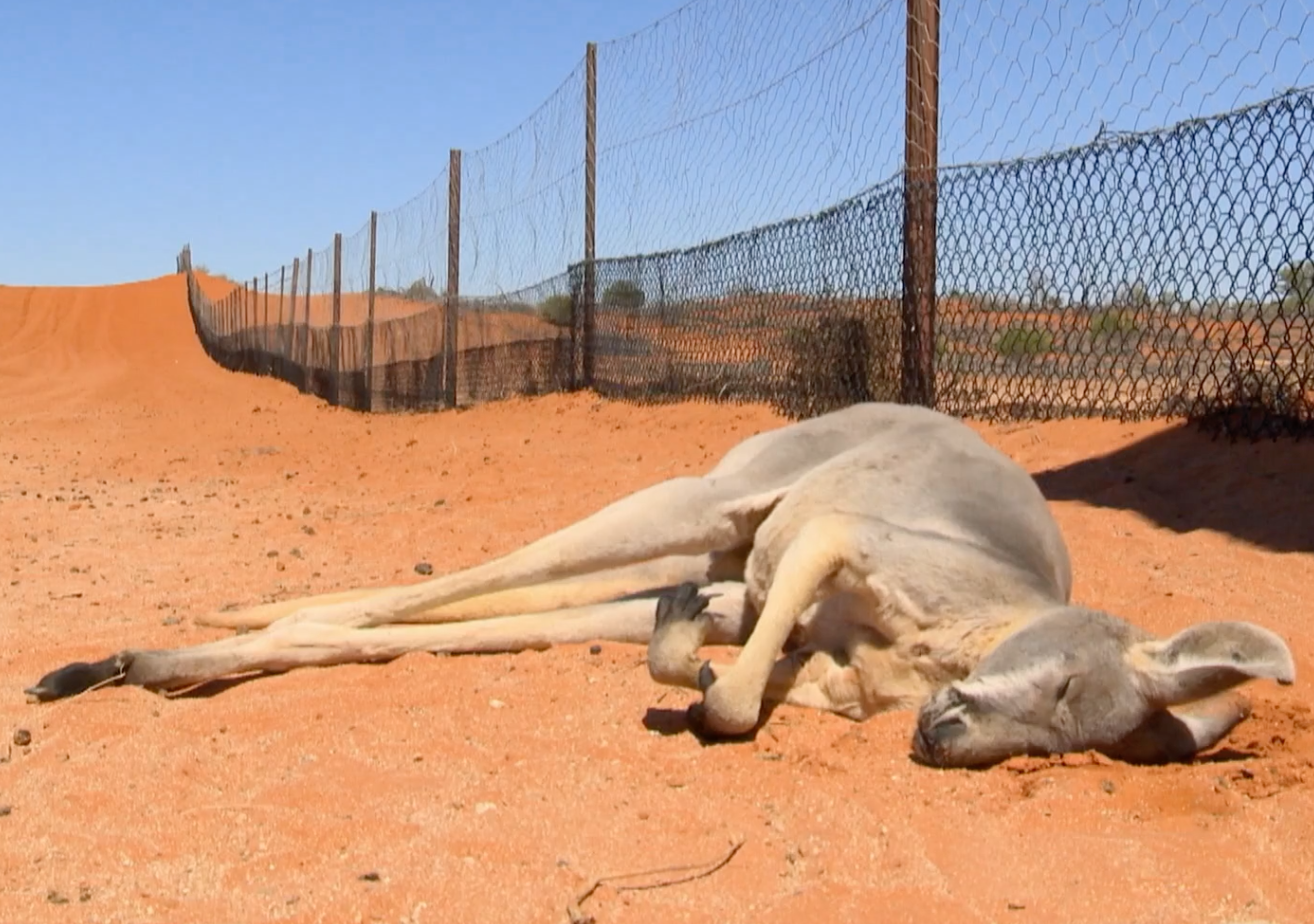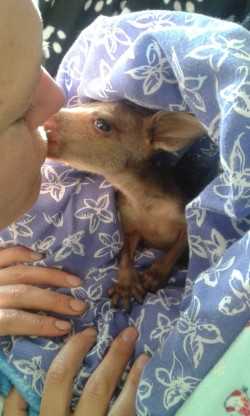‘Like a war zone’: The multimillion-dollar industry killing off Australia’s kangaroos
Europe’s demand for kangaroo meat and pelts is fuelling the slaughter of millions of the iconic marsupial, often illegally, in the dead of night. Jane Dalton delves into one of Australia’s most divisive issues


The first you know is being woken up by the enormous crack of the high-powered rifle and the spotlight through your bedroom window, and then it’s on: everything you love and have worked for ripped out from under you, the only thing to do is to rigorously gather evidence,” says Greg Keightley.
“So you force yourself to walk out the front door and film the precious beings you call family being massacred in the most macabre, cruel, heartbreaking ways. How do we do that? I don’t really know but someone has to – don’t they?”
For more than a decade, Keightley and his partner Diane Smith have lived in “essentially a war zone” next to their New South Wales home, which shares a boundary with a property that allows the shooting.
The killers may turn up any time between 8pm and 2am to carry out their secretive practice under cover of darkness and when their targets are most active. They are hunting kangaroos, Australia’s native marsupial, for a multimillion-dollar industry that divides the country.
“We have had rifles levelled at us while being tracked by shooters’ spotlights as we move around on our own property. We have seen kangaroos shot directly in front of us, our house, our vehicle where, if the kangaroo moved, the bullet meant for the kangaroo would have hit one of us. And we have never seen a baby joey killed according to the code of practice,” says Keightley.
The kangaroo is a timeless symbol for Australia, its image used to promote the country to overseas tourists and sell all kinds of goods from chocolates to clothing and cars. The national rugby league team is even named after the animal that can grow to over 6 feet tall.
Yet the innocuous marketing hides a very different use of kangaroos. Every year, they are hunted down like pests and killed in their millions for their meat and skins.
The slaughter, said by conservationists to be the largest massacre of a wild animal in the world, is largely fuelled by European consumers, with an estimated two-thirds of kangaroo “products” exported to the continent. Here, their flesh is turned into burgers or steaks for human consumption or pulped into pet food, their pelts made into shoes, football boots, car seats and fashion accessories.
The industry has faced controversy for years, but the wildfires that swept across southeastern Australia last December and January brought it into sharp focus.
An estimated 3 billion animals died in the bushfires but nobody knows how many of those were kangaroos. They are fast movers when hopping – but not always fast enough to escape the flames. Those that survived are still being killed.
Australia’s relationship with its own emblem is complex. Supporters of culling argue Australia is brimming with the creatures they consider pests for grazing on grassland reserved for sheep and other livestock and taking precious water resources. The Australian government, which oversees exports of kangaroo products, says overabundant populations have a “significant impact” on agriculture and the environment.
But animal rights campaigners argue the continued killing of a species already ravaged by fire threatens to wipe them out altogether, and is another example of humanity’s needless attack on native biodiversity.
However, kangaroo-lovers have another reason to oppose the slaughter: the brutality and suffering – to the animals targeted and their families and wider communities – that goes largely hidden from the public.
The cruelty, activists say, is caused by official annual “culling”, carried out under quotas for the export trade in four states – New South Wales, Queensland, Western Australia and South Australia – and by unofficial killing, done year-round supposedly to protect land. In some places, such as Canberra, populations have also been cleared to make way for housing developments.
Very often the kangaroos are not shot in the head but are left to die a slow death from stomach and throat wounds. Some have their limbs cut off while still alive. I have seen the aftermath when they leave the heads, innards, tails and hands behind
While arguments rage over justifications, there is little disputing it is a grisly industry. The adults are shot; the joeys ripped from the mothers’ pouches may be likewise shot, or, frequently, bludgeoned to death or decapitated.
Joeys that are “at foot” – slightly older than babies but still dependent on their mothers – flee in fright and then, unprotected, face starvation, predation, exposure or stress out in the wild, according to rescuers. The Australian Society for Kangaroos says 440,000 babies a year will either starve or be bludgeoned to death after their mother has been shot.
A common method of killing is bashing the joeys’ heads against trucks. Although kangaroos are protected by law, this is legal.
Nor are the adults killed instantly, since shots are not always to the heart or heart, which the commercial code requires. Spot checks have shown high numbers died of neck shots, and a report by the RSPCA in 2002 suggested 100,000 kangaroos a year were not killed humanely in the commercial industry. The Eurogroup for Animals, representing around 70 organisations, says up to 40 per cent of shot kangaroos suffer horrific injuries rather than immediate death.
Keightley’s experience confirms this. “We’ve had vets examine much of our evidence, including examination and X-rays of kangaroo heads left by the shooters showing no bullet or fragments in the brain or skull.
“We’ve found that kangaroos who have been shot by harvesters and then escape can sometimes survive for several weeks until becoming immobilised by infection and parasite infestation. We’ve rescued jaw-shot mothers who are unable to eat or drink and are struggling to survive days after being shot.”
The killers tend to target the largest animals as they yield the most meat and leather, which, critics say, has a “devastating effect” on mobs, removing the strongest genetic lines needed to help future generations thrive.
Shooting takes place at night, often in remote and shifting locations, “which makes effective monitoring and enforcement of regulations impossible”, according to Animals Australia.
Jenny Elliott, of the campaign group Kangaroos Alive and a frequent visitor to the country from the UK, describes the brutality of the industry: “Very often the kangaroos are not shot in the head but are left to die a slow death from stomach and throat wounds. Some have their limbs cut off while still alive. I have seen the aftermath when they leave the heads, innards, tails and hands behind.”
The slaughter – or “harvesting” – which began in 1959, has been given sporadic publicity in Europe. In 2006, David Beckham stopped wearing kangaroo hide football boots after learning about the leather’s origins.
440,000
orphaned joeys starve or are bludgeoned to death a year
In the UK, kangaroo meat was sold in supermarkets for a while, marketed as low in fat and sustainable. But following campaigns by animal protection activists, it was dropped by chains unwilling to face a backlash for a relatively niche product.
In Europe, animal welfare groups such as France’s Brigitte Bardot Foundation have called on supermarkets and sportswear brands to halt imports of the meat and leather.
As well as animal suffering, they have highlighted what they say is a public health risk. A report on behalf of Animal Liberation New South Wales identified a “potential human health threat from an unidentified epidemic that periodically causes high levels of mortality in localised kangaroo populations”, claiming hygiene practices in rural areas, where kangaroos were butchered, were unacceptable. Russian officials have been so concerned they have banned imports of the meat.
Another report, by the Australian Society for Kangaroos, said laboratory results of kangaroo meat in Australian supermarkets showed a 75 per cent contamination rate of E coli and salmonella bacteria.
But still the practice of shooting kangaroos, said to be worth A$174m (£94m), continues to thrive, with laws that “ensure a sustainable and humane commercial harvest”, according to industry chiefs.
According to government statistics, last year a quota of more 6 million out of an estimated population of 42.1 million was set – 14.7 per cent – although quotas are not always fulfilled. (“We don’t use the term cull – because it’s not a cull. It’s either a commercial slaughter or a non-commercial slaughter,” Australia’s Animal Justice Party tells me.)
Other estimates vary from around 1.6 million to up to 10 million a year. In New South Wales alone this year’s quota was set at 2.12 million, up from 1.83 million last year.
However, nobody can say for sure how many kangaroos are slaughtered across the country each year because official figures cover only quotas issued for commercial use, not those killed non-commercially or illegally – thought also to run into the millions.
Ray Mjadwesch, a New South Wales ecologist and arch-critic of the authorities’ methodology, says despite surveys, scientists have no real idea how many kangaroos there are, nor how many there were before white people came along, let alone how many are targeted.

In recent years, Australia’s roo population was judged by the government to be at around 50 million, based on largely aerial surveys. Between 2001 and 2013, it’s thought numbers fell and rose again, but they have since dropped.
When the world saw native wildlife being burnt to death 10 months ago, the state of South Australia briefly put the slaughter on hold, only for it to resume later, but there has been no mass monitoring of kangaroo populations nationwide since then, according to Elliott, who fears for the animal’s future.
“The marketing is very good,” she says. “Promote the idea that kangaroos are in abundance, in ‘plague proportions’, that they take water in drought, that they are pests. But, with their reproduction rates being very slow, the mortality rates of juveniles being high, and predation and millions being killed on the roads, this is impossible.”
Elliott also disputes claims by authorities that the marsupials damage the environment. “Kangaroos are soft-footed, and cattle and sheep are not – soil erosion comes from agriculture. Kangaroos eat different things to cattle and consume far less water than domestic animals, yet they are the scapegoat.
“You could say that there is an unwillingness (globally) to accept and live with wildlife in an increasingly fast populating world where space is taken from wildlife’s habitats.”
The Kangaroo Industries Association of Australia (KIAA), which supports licensed shooters, insists “the commercial kangaroo industry is completely transparent and accountable”, and that slaughter is “supported by conservation and environmental protection communities throughout Australia due to clear goals of sustainability and ecosystem preservation”, creating at least 4,000 direct and indirect jobs.
Animal welfare, the association says, is taken care of by regulations to which shooters adhere, with independent monitoring on several occasions. “The latest in 2012 demonstrated that 99.6 per cent of all kangaroos targeted by professional harvesters are killed instantaneously, according to the regulations,” it claims.
“In addition, all kangaroos processed for export are assessed by government veterinarians to check they were taken in compliance with the animal-welfare regulations. In 2015 of more than 1 million animals inspected, 25 were suspected of being non-compliant. That’s an extraordinarily high level of compliance.”
But Keightley’s testimony tells a different story. He says when he and Smith moved to New South Wales, they were horrified to witness “what could only be described as a local annihilation of a species”.
They saw “families torn apart by bullets, stunned kangaroos watching their shot mother or father being bludgeoned to death or stabbed in the throat while hanging from the shooter’s truck by a hole cut through their leg”. Some, he says, just stand watching, “immobilised by shock just as we may be in the same situation - just as we were the first time we saw it”.
We’ve found that kangaroos who have been shot by harvesters and then escape can sometimes survive for several weeks until becoming immobilised by infection and parasite infestation. We’ve rescued jaw-shot mothers who are unable to eat or drink and are struggling to survive days after being shot
“Others run for their lives, smashing into fences, blinded by terror,” he says, “orphaned joeys running alongside their dying mothers as they are driven away by the ‘harvester’, and then calling for their mothers for days until they die of starvation, dehydration, predation or fear, confusion and sadness.”
Keightley describes “shot kangaroos being chased by the harvester in his vehicle for hundreds of metres until they fall”, adding: “We’ve also seen inspirational courage from big male kangaroos as well as very old females who will often place themselves in the way of the shooter to allow their family and friends to escape. In most cases, they are shot. We believe, having seen this over and over again, that they know the risk they are taking and are prepared to lay down their lives for their families.” In response to everything they saw, he and Smith set up Kangaroos Alive, a non-profit organisation.
The Australian government says on its website: “While Australia’s laws concerning wildlife trade are some of the most stringent in the world, they are not intended to obstruct the sustainable activities of legitimate organisations and individuals. Instead, they have been designed to demonstrate that when managed effectively, wildlife trade contributes to, and is entirely compatible with, the objectives of wildlife conservation.
“The commercial kangaroo harvest industry in Australia is one of the world’s best practice wild harvest operations, with management goals based firmly on principles of sustainability.”
But critics are adamant that with reproduction rates below the killing rate, populations are under threat.
According to the Eurogroup for Animals, which last month issued a report on Europe’s role in the trade, in some parts of Australia kangaroos are already extinct locally, because “countless” deaths go unrecorded thanks to illegal shooting or targeting by landowners. “And analyses of population levels have shown that there are flaws in survey methods. As a result, local and regional extinctions have already been observed throughout the country,” it says.
The Australian Society for Kangaroos says numbers have been in dangerous decline for years, with Queensland government data showing populations halving in most areas surveyed in 2014. One scientific report claimed that “if commercial hunting continues at these critical densities, it puts the species at risk of extinction”.
Mjadwesch told The Independent: “It is abundantly clear that there are many landscapes where kangaroos were reported in large numbers historically (swarms etc) which are now covered in housing or agriculture.”
Elliott is bewildered by the lack of international outrage. “Look at the outcry at the killing of elephants for their tusks, whales for ‘research purposes’ and rhinos for their horns, while the killing of Australia’s most ecological engineer and iconic symbol - their numbers have disappeared in many states - goes on unabated.”
Industry representatives, however, insist no threatened species is commercially harvested. Of Australia’s 48 species, six have become extinct since European settlement and six are endangered, none of which may be killed in the wild, says Dennis King of the KIAA, adding: “No adverse long-term impacts on kangaroo populations have been identified after more than 30 years of harvesting.”
He points out that most of last season’s bushfires were in national parks, “not areas where commercial harvesting is permitted”, but states have adjusted management plans where local populations have been hit.
King says his association cannot comment on the methods or amount of non-commercial or illegal shooting, which leaves questions remaining over the extent of the threat.
But after repeatedly witnessing the slaughter yards from his home, Keightley says: “This barbaric slaughter can't continue in secret for another 15 or 20 years until every kangaroo is wiped off the face of the Earth. So yes, we struggle sometimes with sadness, fear that it will never end or that we will catch one of the many stray bullets, powerlessness when trying to engage the help of regulatory authorities and the sheer tiredness of witnessing six, eight or even 10 hours of shooting followed by what can be days of searching for the resulting injured and orphaned kangaroos.”
The animal’s lowly status even makes them the subject of violent attacks, another factor in the threat to numbers, Elliott says. “In 2018 the New South Wales government relaxed the permit application for killing kangaroos in response to an extreme drought, making it easier for people to kill as many as they want. People deliberately run them over and there has been a surge of abuse inflicted, such as stabbing, beating and/or setting then on fire.”
The roos, she insists, take the blame for using water, while man-made industries such as livestock farming and cotton plantations take much more.
“Kangaroos have been around for millions of years and know how to adapt to weather conditions. Their habitat has changed, they are forced to move around, they are held within fenced off areas and are ‘culled’ when developers want to build more housing.
“But many Australians don’t want the world’s largest massacre of their national icon.”
To mark world kangaroo day at the weekend, Elliott led a vigil outside the Australian embassy London. “Demand a ceasefire,” the banners said.
The work of Keightley and Smith is featured in the award-winning film ‘Kangaroo: a Love Hate Story’





Join our commenting forum
Join thought-provoking conversations, follow other Independent readers and see their replies
Comments